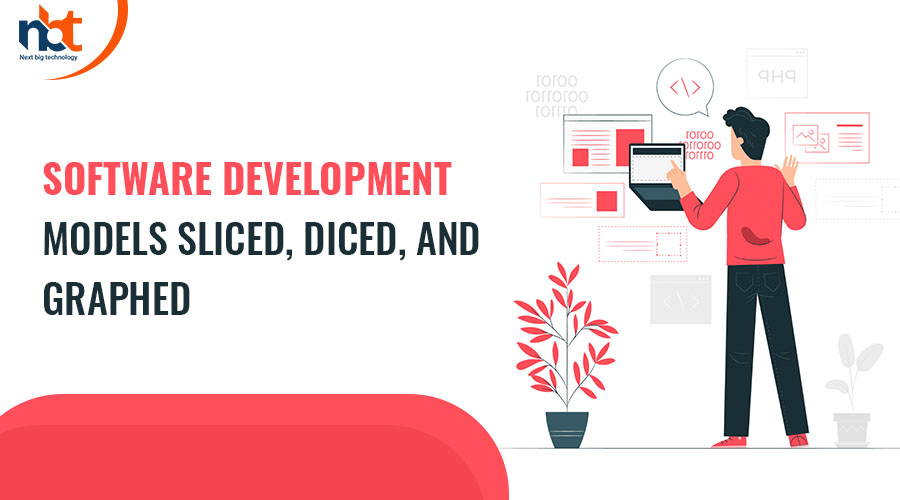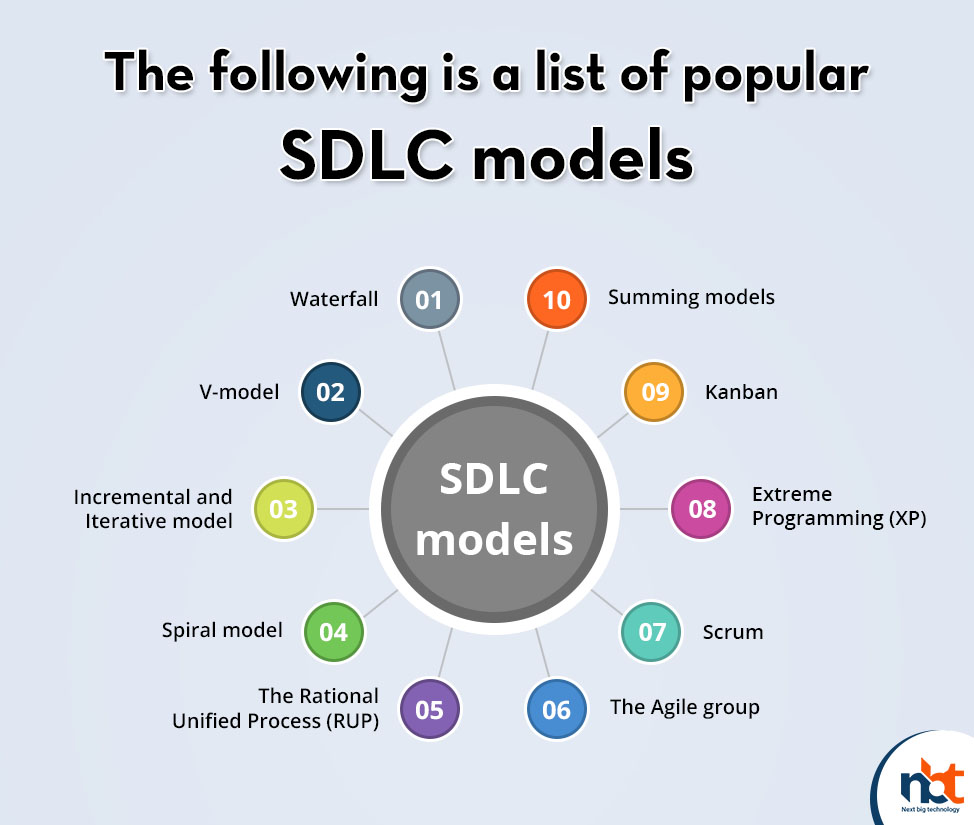Models of the software development life cycle (SDLC) demonstrate how to traverse the complex and difficult process of software development. The quality, timeliness, budget, and ability to meet stakeholders’ expectations are all influenced by the model chosen.
There are currently more than 40 SDLC models in use. None of them are flawless, and each has its own set of benefits and drawbacks for a particular software development project or team. We’ve chosen 8 of the most popular models based on our 32 years of software development experience to examine their essence and compare core characteristics.
Table of Contents
The following is a list of popular SDLC models
Depending on how they handle workflow organization – linearly or iteratively – and what kind of relationships are built between the development team and the client, all SDLC models can be divided into numerous classes.
The types in the chart’s lower quadrants follow a sequential flow. They’re simple to set up, use, and manage. As you progress up the ladder, the process becomes less rigid and more adaptable to changes in future software requirements.
The models on the left side of the chart suggest less customer involvement; as you move to the right, the models get more ‘cooperative,’ incorporating customers more deeply into various stages of the software development life cycle.
What are the different types of SDLC models and which projects do they best support?
Waterfall
manner of cascade Each step has certain deliverables that are meticulously documented. The following stage cannot begin until the preceding one has been finished completely. As a result, software requirements, for example, cannot be re-evaluated during development. Furthermore, until the final development step is completed, there is no way to examine or try software, resulting in significant project risks and unexpected project outcomes. Testing is frequently rushed, and fixing errors is expensive.
Case studies:
- Simple small to mid-sized projects with well-defined, repeatable needs (small company website development).
- Projects that require a higher level of control, as well as a more predictable budget and timeframe (e.g., governmental projects).
- Multiple rules and regulations must be followed when working on a project (healthcare projects).
- Projects that make use of a well-known technology stack and tools.
V-model
Another linear model is the V-model, which has a testing activity for each level. Such workflow organization ensures high quality control, but it also makes the V-model one of the most costly and time-consuming models. Furthermore, despite the fact that problems in requirements specifications, code, and architecture can be spotted early, changes throughout development are still costly and difficult to implement. All requirements are gathered at the start, just like in the Waterfall instance, and they cannot be modified.
Case studies:
- Projects where downtime and failures are unacceptably costly (e.g., medical software, aviation fleet management software).
Incremental and Iterative model
The incremental development method is divided into multiple iterations (“Lego-style” modular software design is required!). In each iteration, new software modules are added, with no or minor changes to previously added components. The development process can be carried out in either a sequential or parallel manner. Parallel development speeds up the delivery process, whereas sequential development takes a long time and costs a lot of money.
With iterative development, software evolves and grows with each iteration. The software design remains consistent as each iteration builds on the preceding one.
Because software is given in pieces, there is no need for a detailed specification at the outset of the project, and tiny adjustments to requirements can be made during development. However, needs cannot be drastically altered; key requirements, particularly those for system architecture in the event of incremental development, must be established at the outset, as future integration of the provided software elements may become a problem.
Because tiny requirements amendments may be required during the development process, this SDLC approach often involves some client input.
Case studies:
- Large, mission-critical enterprise programmers made out of loosely linked components like microservices or web services.
Spiral model
The Spiral model emphasizes extensive risk analysis. To get the most out of the model, you’ll need to work with people that have a good history in risk assessment. A typical Spiral iteration lasts about 6 months and includes four key activities: comprehensive planning, risk analysis, prototyping, and review of previously delivered parts. Spiral cycles that are repeated significantly lengthen project timelines.
This is the model in which the consumer is heavily involved. They can participate in the cycle’s exploration and review stages. The customer’s revisions are not acceptable during the development stage.
Case studies:
- Projects with ambiguous business needs or requirements that are too ambitious or inventive.
- Projects that are enormous and difficult to complete.
- The launch of a new service or product through research and development (R&D).
The Rational Unified Process (RUP)
The Rational Unified Process (RUP) is a framework that combines linear and iterative approaches. Inception, elaboration, construction, and transition are the four phases of the software development process, according to the paradigm. Except for Inception, each step is normally completed in numerous cycles. All basic development activities (requirements, design, etc.) are carried out in parallel across these four RUP phases, though at varying intensities.
RUP aids in the development of solid and flexible solutions, although it is still slower and less adaptive than a pure Agile group (Scrum, Kanban, XP, etc.). Depending on the project requirements, the level of client interaction, documentation intensity, and iteration length may vary.
Case studies:
- Large and high-risk projects, particularly use-case-based development and high-quality software development in a short period of time.
The Agile group
The Agile framework encompasses the rest of the SDLC models we’ve chosen. In today’s world, more than 70% of businesses use some form of Agile methodology in their IT projects. Iterative development, intensive communication, and early client feedback are at the heart of Agile in general.
Each Agile iteration usually lasts a few weeks and results in a fully functional software version. This group’s approaches place a greater emphasis on swiftly delivering a working element of the application. They give more attention to software testing activities than to thorough software documentation (detailed requirement specification, detailed architecture description). This encourages rapid creation, but it also delays software transfer to the support team and complicates maintenance because it takes longer to detect a problem when there isn’t a clear program description.
Agile emphasizes close collaboration among team members as well as with consumers. Stakeholders analyze the development progress at the conclusion of each iteration and re-evaluate the priority of activities for the next iteration in order to maximize the return on investment (ROI) and guarantee alignment with user needs and business goals.
As a result, Agile models are known for their frequent releases. They also help to deliver applications that better suit customers’ expectations by allowing for continuous software enhancement through simple fixes and changes, quick updates, and feature addition. However, because to a lack of precise planning and a willingness to change, it is impossible to accurately predict the project’s budget, time, and personnel requirements.
Case studies:
- Practically any startup initiative that requires early input from end customers.
- The majority of mid-sized custom software development projects where business needs cannot be reliably converted into explicit software requirements.
- Large projects that can be broken down into small functional components and developed slowly over time.
Agile comes in a variety of flavor’s. Scrum, Extreme Programming, and Kanban are the most common subcategories today.
Scrum
Scrum is the most widely used Agile methodology. Iterations (‘sprints’) normally last 2-4 weeks and are preceded by rigorous planning and prior sprint evaluation. After the sprint activities have been defined, no alterations are permitted.
Extreme Programming (XP)
A typical iteration in Extreme Programming (XP) lasts 1-2 weeks. If the team hasn’t started working with the appropriate software element yet, the paradigm enables for changes to be made even after the iteration has begun. The supply of high-quality software is substantially hampered by such flexibility. To address the issue, XP recommends pair programming, test-driven development and automation, continuous integration (CI), limited releases, and simple software architecture, as well as adhering to code standards.
Kanban
The absence of significant iterations is a fundamental differentiating aspect of Kanban. If they are used, they are kept to a minimum (‘daily sprints’). Instead, the focus is on visualizing the plan. The Kanban Board tool is used by the team to keep track of all project activities, their quantity, accountable individuals, and progress. Increased transparency aids in more accurate estimation of the most pressing tasks. Furthermore, because the model lacks a specific planning stage, a new change request can be made at any time. Customer communication is ongoing; they can review work outcomes at any time, and project team meetings can take place on a daily basis. The model is commonly used in software support and evolution projects due to its nature.
Summing models
We assessed the models in terms of essential criteria – time, cost, and quality – using the study data as a foundation to make them easier to absorb and interpret.



















